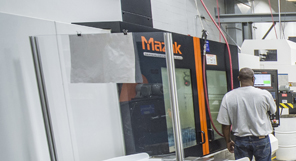
With machines that range from 1250 – 5800 individual parts, having everything ready for assembly is a crucial milestone in our builds. By looking at the sequence of the assembly to understand the various schedule constraints we can better leverage time and resources.
In a lean manufacturing environment, having the rights parts at the right time is more important than having 100% availability by a certain date. While Glebar maintains some of the best lead times in the industry, we are striving to reduce those lead times in all our product lines. While this sounds simple, this first stage in testing has shown the depth at which you must go to get down to the root of the matter and remove the most amount of “non-valued added time.” This time can range from the obvious like, “raw material lead time,” to the tricky inventory levels of manufacturing parts that branch off into other part numbers.
Our visual shop floor management techniques are also in the initial test phase to help compare historical data to our current performance and help guide us in our lead time reduction initiative. Utilizing IoT (Internet of Things) technology, we are connecting multiple machines and systems to each other to learn about the flow of material and work inside the facility. The insight and amount of data that can be captured in a fully implemented IoT system will have a huge effect at Glebar as well as the greater global market. The sky is the limit here, and our team makes Glebar “Innovation Manufactured™.”



